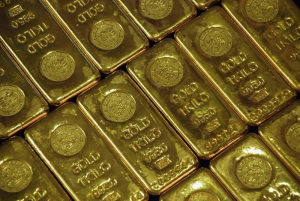The euro rose on Thursday after data showed euro zone business activity expanded at its fastest pace in a year this month, while the pound was steady near a two-month high on the dollar unmoved by the announcement of a British election.
The European common currency was last up 0.22% at $1.08450 after the preliminary composite Purchasing Managers' Index for the currency bloc came in above the 50 level separating growth from contraction for the third month in a row, with even struggling manufacturing showing a recovery.
"The dynamism in manufacturing fits with the view that external demand is currently leading the positive momentum in the euro area," said Mark Wall, chief European economist at Deutsche Bank, of the data.
Better than feared economic data for the past few months helped the euro rally in April and early May, and Thursday's data pushed the currency back towards mid-May's two-month high of $1.0895.
Another support for the euro was European Central Bank figures on Wednesday showing negotiated pay growth in the euro zone picked up slightly in the first quarter of 2024, likely making policymakers cautious about their path after next month's all but certain rate cut.
The euro also rose 0.16% against the pound, bouncing off a three-month low touched in early trading.
Sterling was steady versus the dollar at $1.2725, largely unmoved after Prime Minister Rishi Sunak on Wednesday called a national election, which his Conservatives are widely expected to lose to the opposition Labour Party after 14 years in power. However, sterling options volatility for the period covering the July 4 election did rise. [GBP/]
"The market is fairly confident there's going to be a Labour government and it's pretty confident also that the Labour government won't be that different in terms of fiscal policy, than the current Sunak and (finance minister Jeremy) Hunt mix anyway," said Jane Foley, head of FX strategy at Rabobank.
The pound reached a two-month high on Wednesday after sticky British services inflation crushed bets for a June cut by the Bank of England.
The dollar was a fraction softer against the Japanese currency at 156.64 yen and this all left the dollar index, which tracks the unit against six main peers, down 0.15% at 104.7.
That marked a reversal after the index had its biggest daily percentage gain this month on Wednesday as minutes of the last Fed meeting revealed a willingness to raise interest rates among some officials.
PMI data was also in the mix for the yen after data showed Japan's factory activity crept into expansion for the first time in a year in May.
The corporate sector in Japan has been grappling with the weak yen, and nearly half of Japanese firms find the yen's slide beyond 155 to the dollar harmful to their business, roughly double the percentage of those who see the currency's weakness as a positive, a Reuters survey showed on Thursday.
To counter the yen's slide, 37% of respondents wanted the central bank to raise interest rates again, while 34% wanted the government to intervene in the foreign exchange market.
The New Zealand dollar added 0.47% to $0.6126 after data released Thursday showed that retail sales volumes in New Zealand unexpectedly rose, its second day of gains after the Reserve Bank of New Zealand surprised markets on Wednesday by lifting its forecasts for peak interest rates and pushing back when it expects to cut. {AUD/]
Among cryptocurrencies, ether was up 2% at $3,835, its highest since mid-March.
It has been surging amid speculation over the potential approval of U.S. spot exchange-traded funds that would track the world's second-biggest cryptocurrency.













